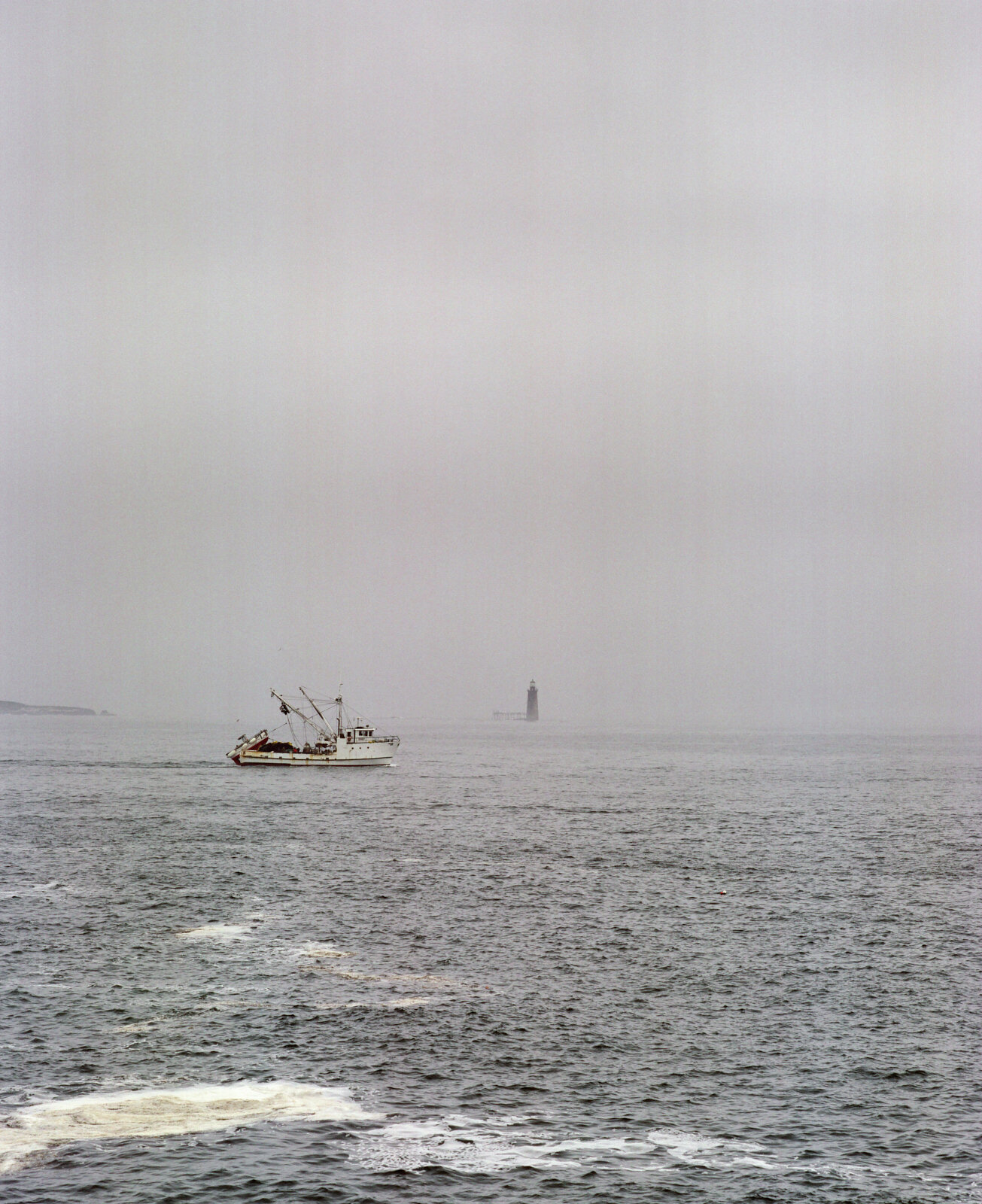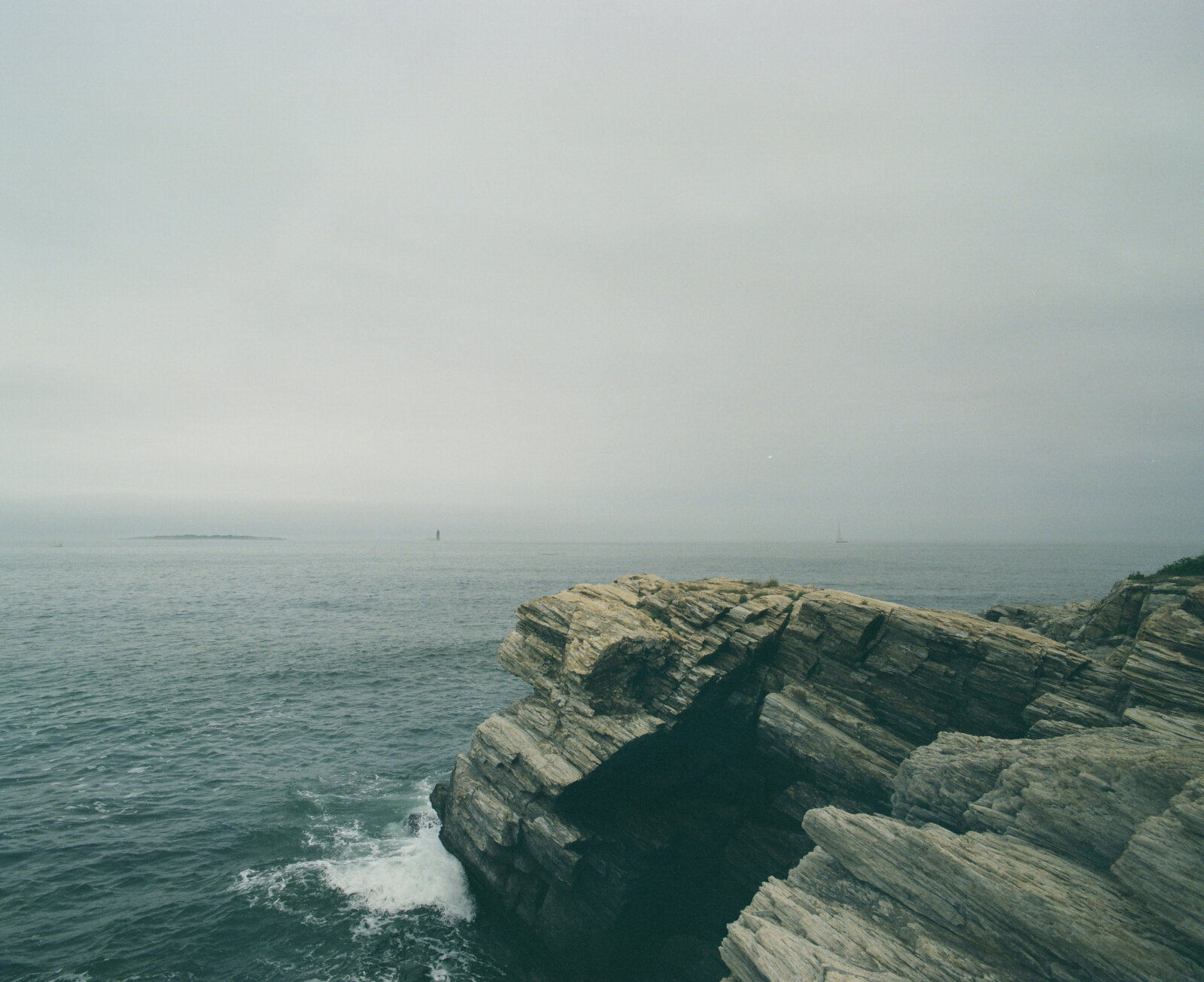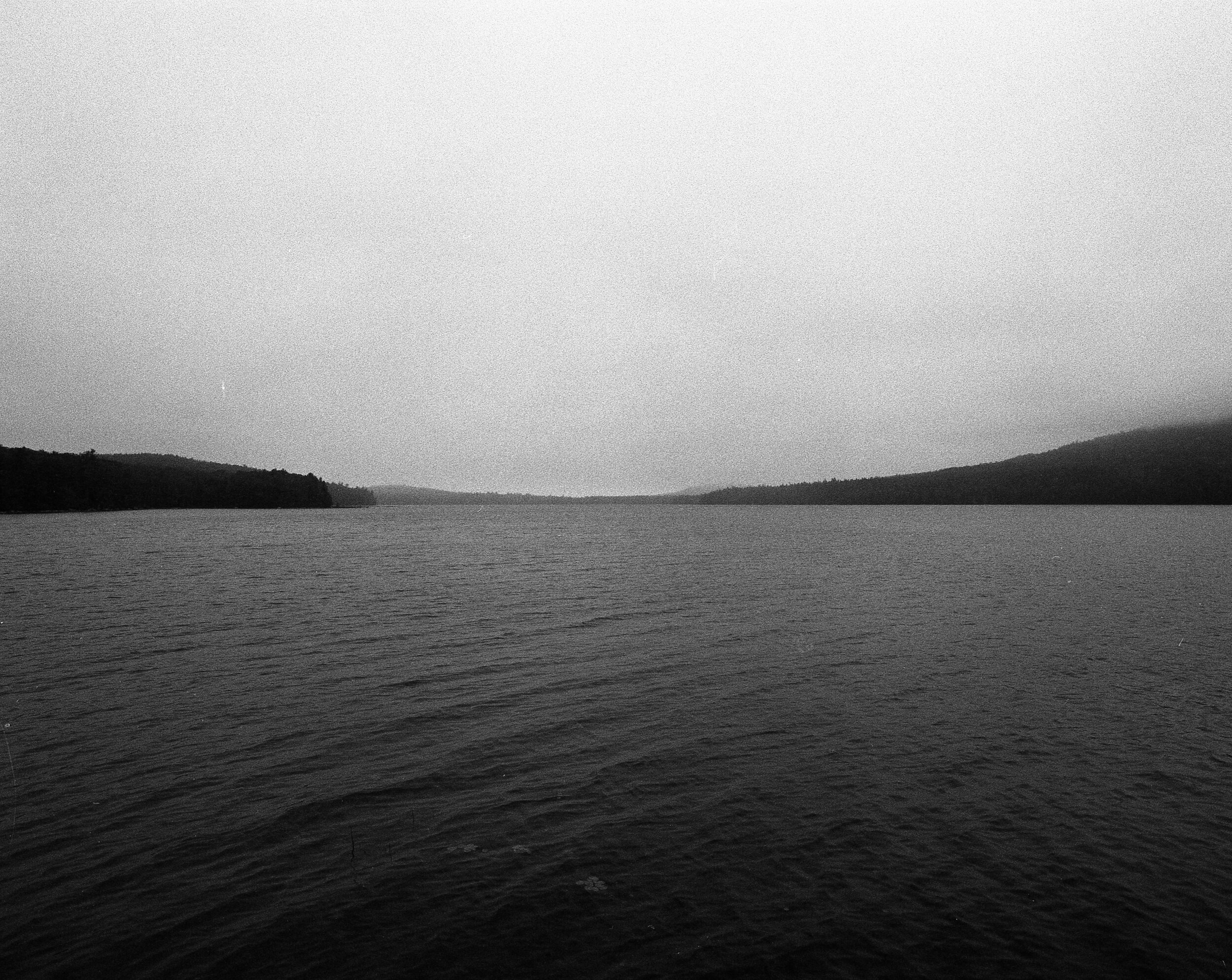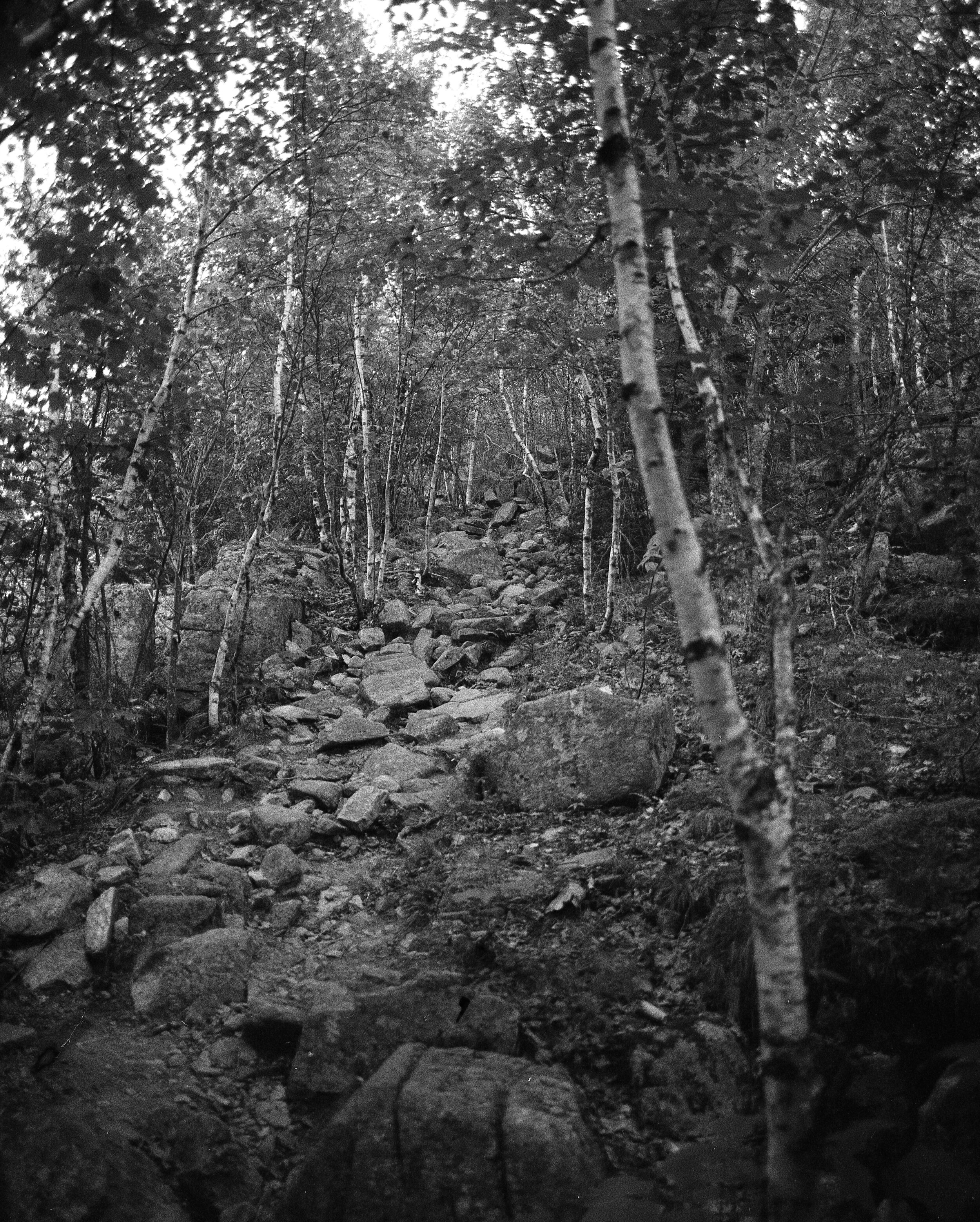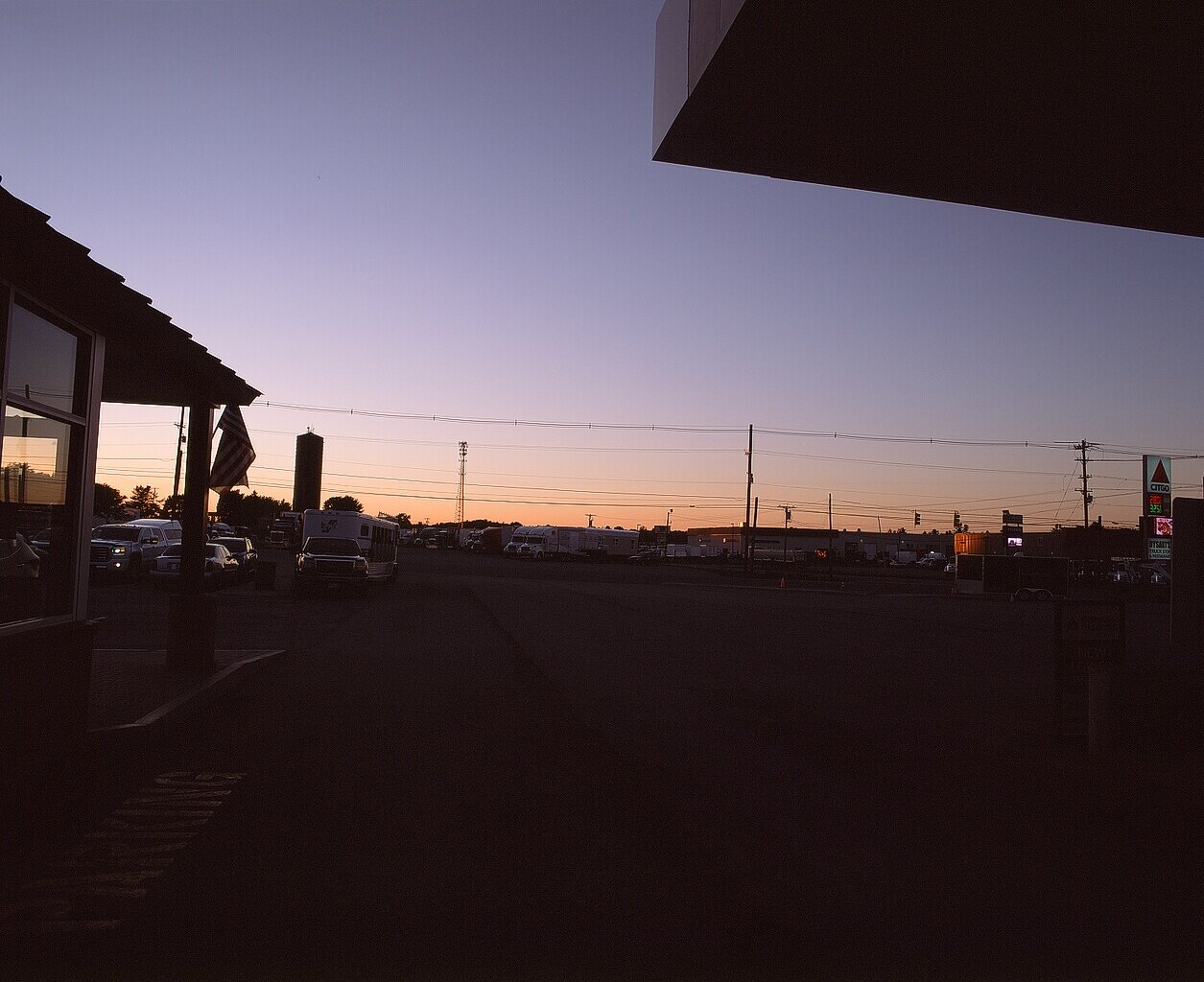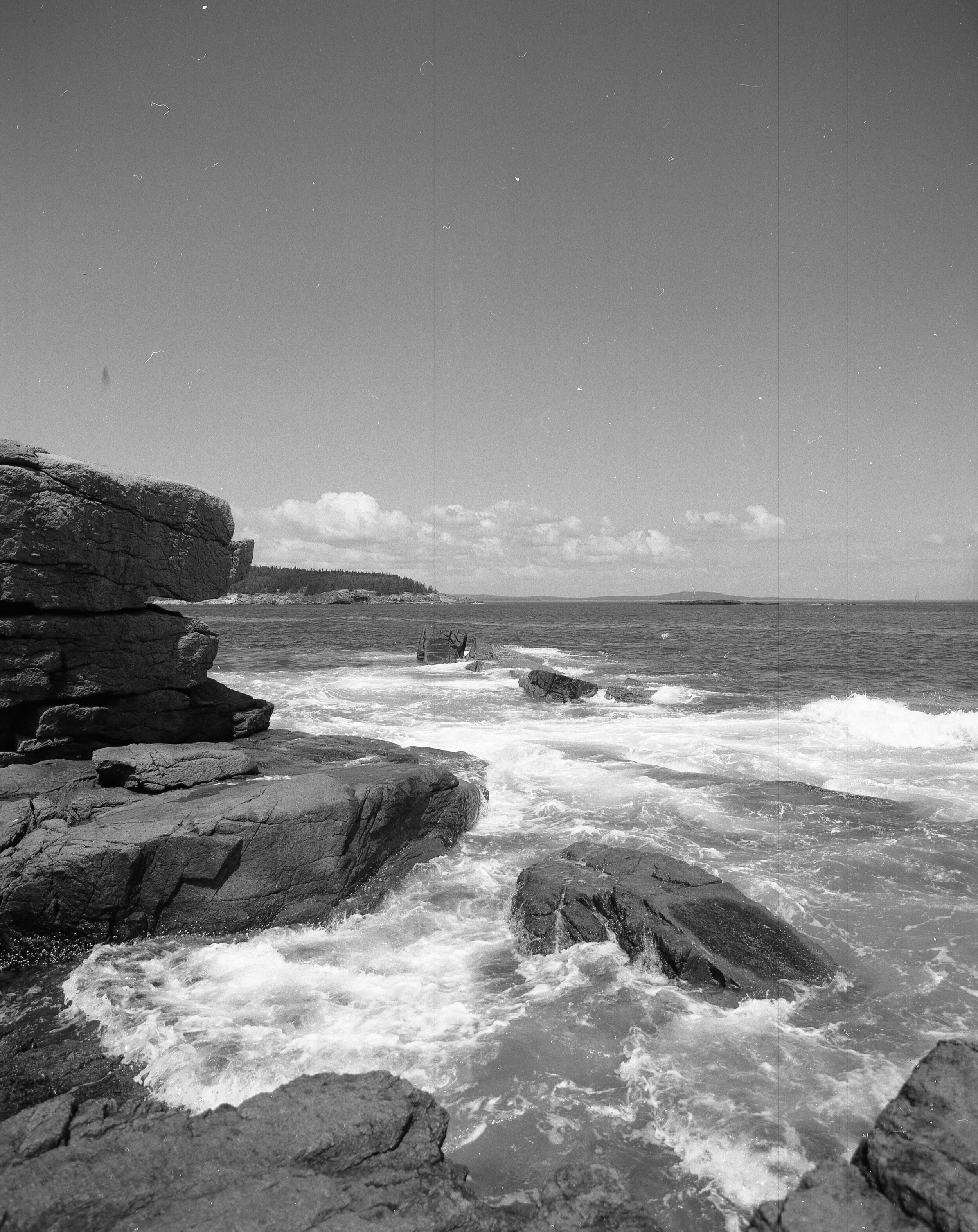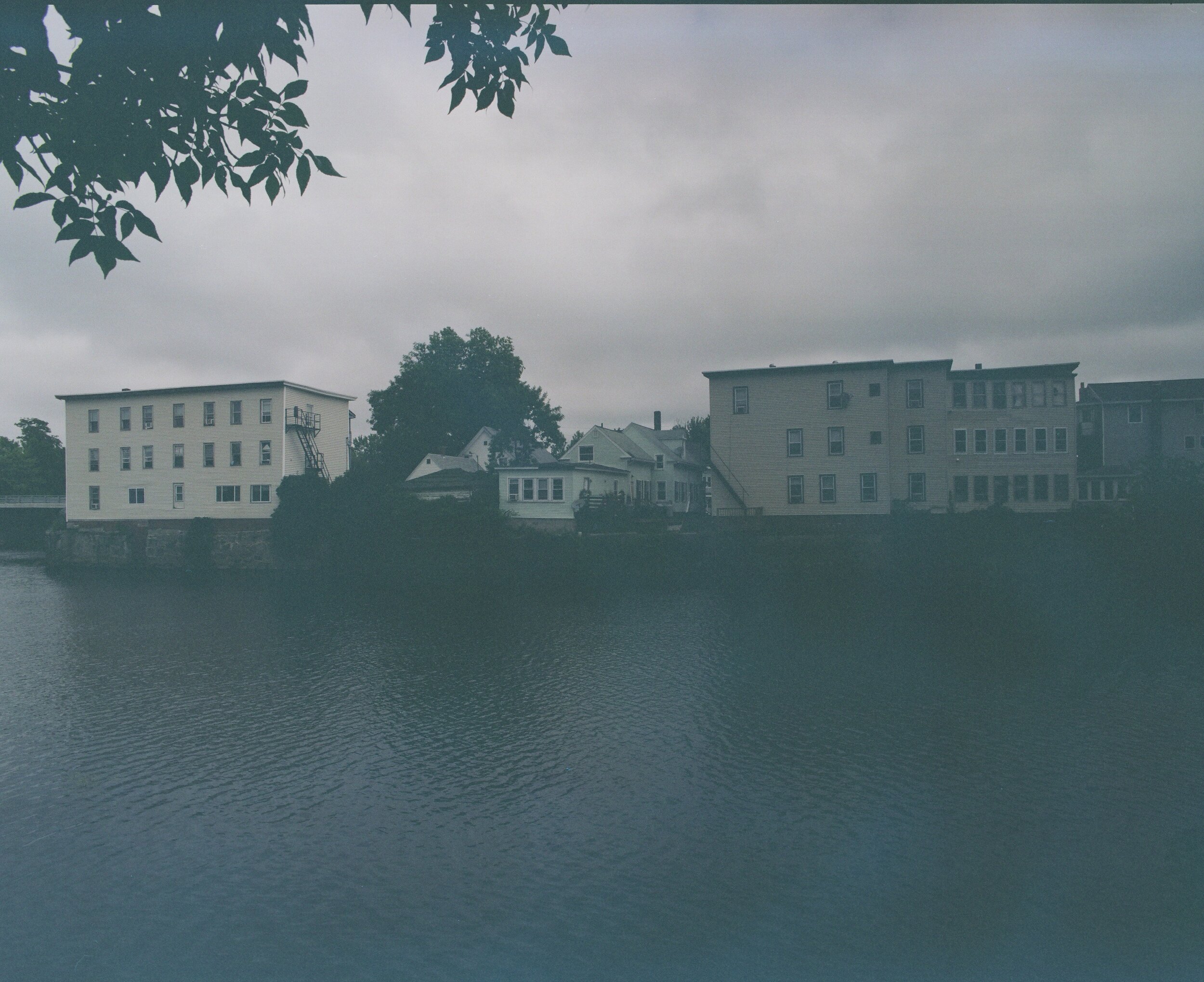Acadia National Park - Pentax 6x7
-- Finally in Glorious Medium Format (that got wasted due to bad metering and waiting too long to get developed)
Usually when I get a large batch of photos, it’s hard for me to do more than an initial triage of the shots. However I waited two years to get these photos developed - the color ones. I don’t think waiting two years is a good idea. I’d be proud of them if they came out two years ago - I can’t just let the photos sit there and do nothing though, so I’m hosting them here.
(Fujifilm 160NS + Fujifilm Pro 400H pictured right, Fujifilm Acros 100 Below — I’d also like to go on record saying I shot this in 2018 before the lighthouse was a movie. Goddamn New Hampshire ass poser making a movie about Maine.)
If you haven’t read the previous maine travelogue, go ahead and do that. I dunno. I’m really starting to sit on the fence of whether the pentax is really the camera for me - I mean yeah I’ve gotten better over two years but it’s not like i’ve actually put the work in to improve that much using it - it’s not super sustainable for a lot of my daily uses and if you’ve followed me, I’ve done a lot of griping about how I just don’t get quite enough practice with it. Unless I’m in some dire pain - ie the grief suite - then there’s like some crazy override switch in my brain that goes off I can start borrowing on some level of photographic skill that doesn’t usually hit me in standard practice until about a year later -- usually about three to six months now that I’ve figured out how to practice better. (Pro 400h from Acadia National Park Below)
Anyway, I’d like to think a lot of these photos are what I traded for pinch hit grief shooting - don’t get me wrong, there’s some good stuff in here, and unlike the usual travelogue photo dump, I’ve picked it over pretty heavily, but all in all, there’s not much I’d put on my resume, nor is there anything worth going back and cleaning up or rescanning - in my opinion. That said, the feeling in a lot of these is cool, and it’s fun to look back on how I shot in 2018. Anyway - enjoy. (Provia 100f in 120 Below)
Honestly most of the color film looks like ass here. I can’t tell if it’s because i waited too long to develop all the film or my metering was way off but it all looks *bad* like there’s some neat stuff, but meh, I wouldn’t steak my name on it now.
I thought I was going to make another book or travelogue out of this, but given the context of the trip and who I took it with, I’m kinda happy to share it here as a learning experience and simply be done with it. Y’know?
The gear report (for that SEO Clout):
A bunch of bergger pancro 400 in 120. A bunch of Acros in 120 (RIP) Some Fujifilm Provia. A whole heaping fuck ton of Fujifilm Pro 400h that quite frankly I wasted -- even worse as the price continues to rise. I almost forgot - there’s some Fujifilm Pro160C in 120 mixed in here. By far my favorite no longer manufactured film/emulsion. Shout out Will Hopkins for scoring me a big ass grip of Fujifilm pro 160NS when he went to Japan. I still need to find a good project for it.
I like 400h a lot - I can’t tell what exactly went wrong -- some of it’s fine some of it isn’t. Same with the Provia 100f. The black and white turned out okay. I mean, I developed it and scanned it myself, and I haven’t really had any major qualms with my own processing in a long time. Longer ago than I shot this (give or take the dust/scan line problem)
All that said, I still don’t feel great about the Bergger Pancro 400. It just never quite turns out like I want it to, and after years of pissing and moaning about it, and not quite ever getting the results I want out of it, I think I’m making the switch to Ilford HP5+. Who knows, I’m really just bloviating here. Sorry. Beyond that this is really where I finally broke down after scanning (thanks Epson V600) and got into canned air - also figuring out how to scan the calibration area. I’m sure I could rescan but, like I said, this isn’t exactly new or relevant material.
Honestly some gripes aside the Provia 100f isn’t too bad -- not quite optimal, but survivable. Y’know? Ah well. Fujifilm, if you’re listening (lord knows you aren’t’/and/or you don’t want to listen to me -- I’ve taken too many potshots for that.) I’d love to get another whack at Provia 100f again.
That said -- as long as this is more of a confessional/photodump -- I had an issue with one roll of the bergger Pancro 400 - I got this crazy dot effect -- I hate that I don’t know what I caused it (the leading guess from @clemtaconsix is that it’s air bells) and it’s kinda unusable for most purposes - however the effect is interesting and I’d like to know what caused it -- if you know, and can show evidence I’ll give you the zine of your choosing, and a t-shirt provided I have the size for you.
The Pentax Kit: Pentax 6x7 MLU, Pentax Takumar 45 F/4 Takumar 105mm f/2.4, Takumar 165mm F/2.8. Honestly the Pentax lenses are kinda nuts. I might *actually* like the 55 more than the 45 - now that I’m a year or two away, and I can see the kinda wacky look. I still think the 105 is the best lens in the range - I need to get that stupid ikea lamp so that I can de-yellow the lens but that’s a small fix -- honestly the yellowing looks pretty good on BNW film so I might invest in a yellow filter - or not because hey, I’m not sure this is the right camera for me. That said, when the 6x7 works and shoots right - it really shoots right.
All in I think a 35mm equivalent on a 6x7 of some kind is where I’m headed. Or not. I dunno. It doesn’t really matter what I shoot anymore. They’re just fucking cameras. That said, I do think Medium format does lend a little more gravitas to the images - while still being reasonably portable.
(The Killing Field, Mini-Series on Pro 400h to the right)
The real key takeaway here is don’t sit on your film for two years. Especially when your fridge is unreliably damp and the weather in LA is stupidly hot in the summer and probably cooks your film half to death.
Again, would still highly recommend visiting Acadia National Park - probably my favorite that I’ve been to, although it gets real touristy, and my opinion is tainted with being a native Mainer.
More important than any of that — go buy a zine or in the shop. I'm tryna raise some funds to clear out my backlog, and make way for some actual new stuff.



